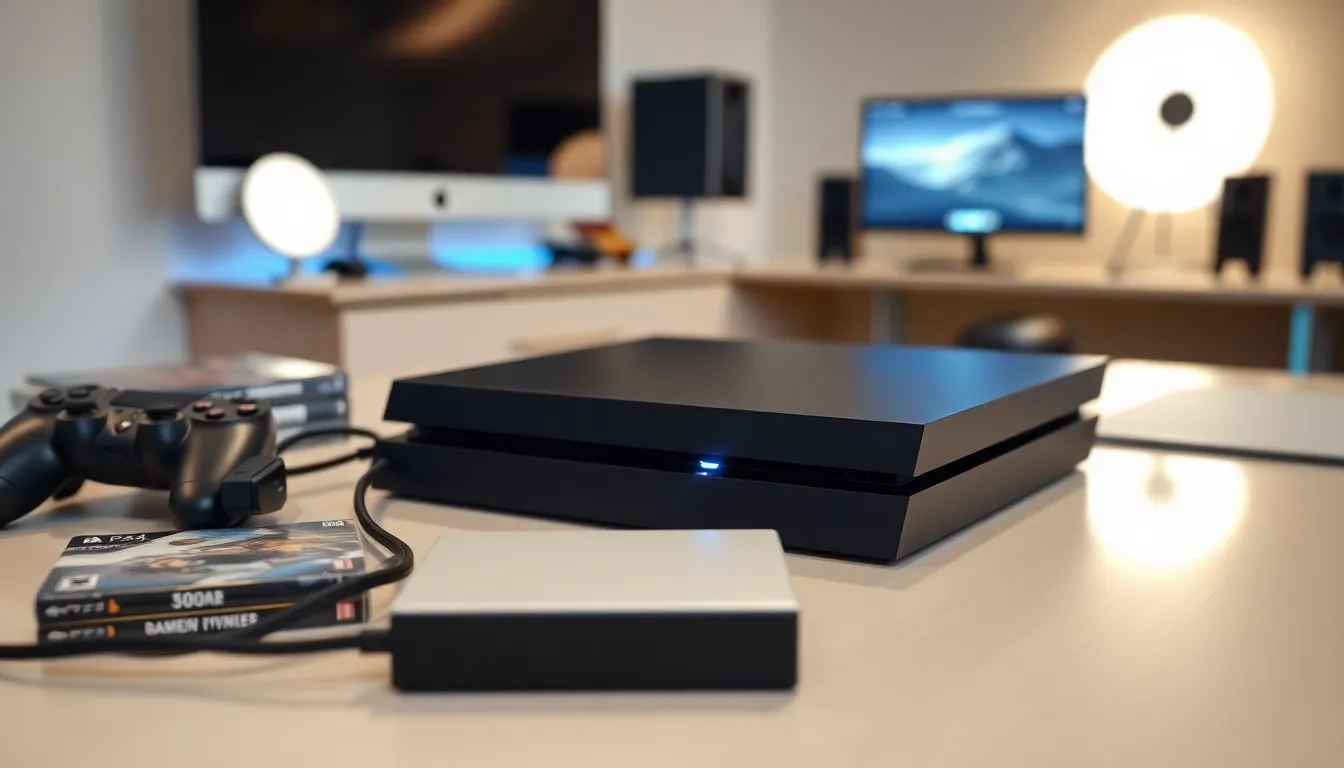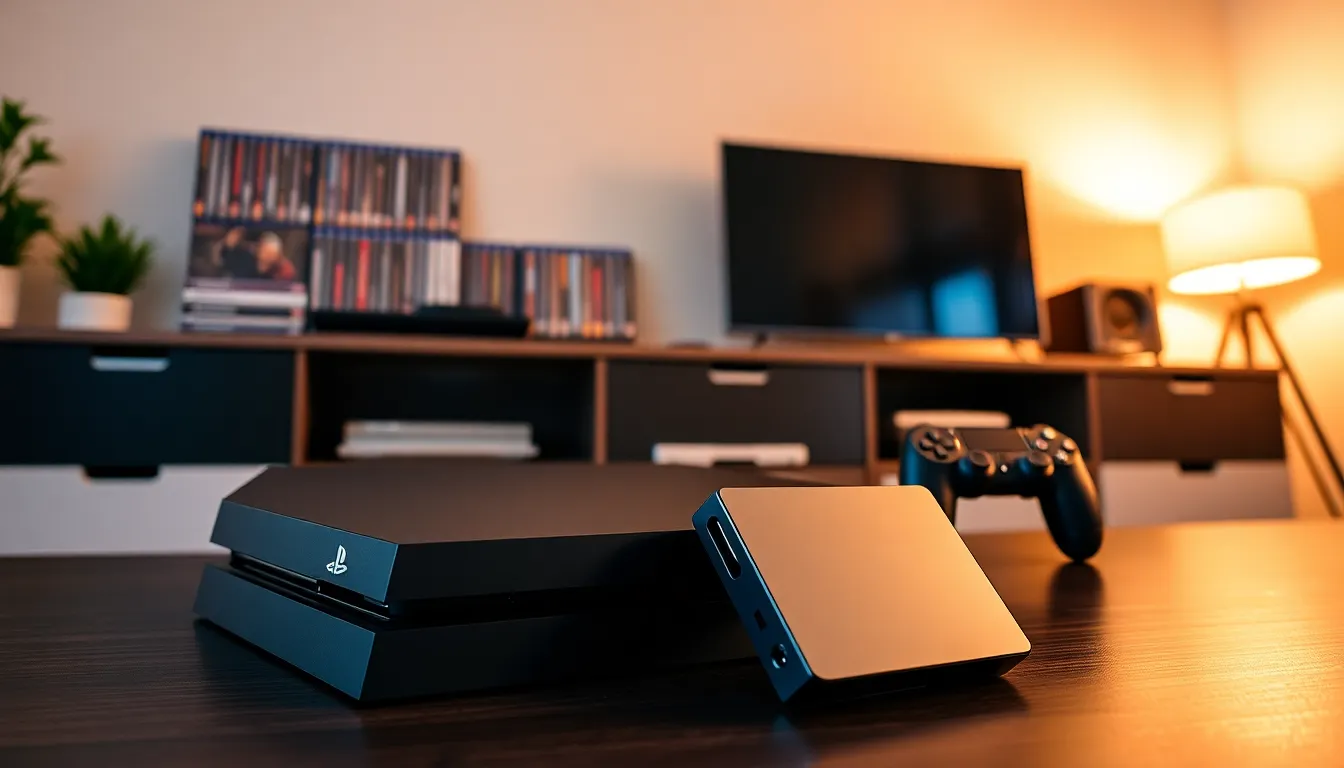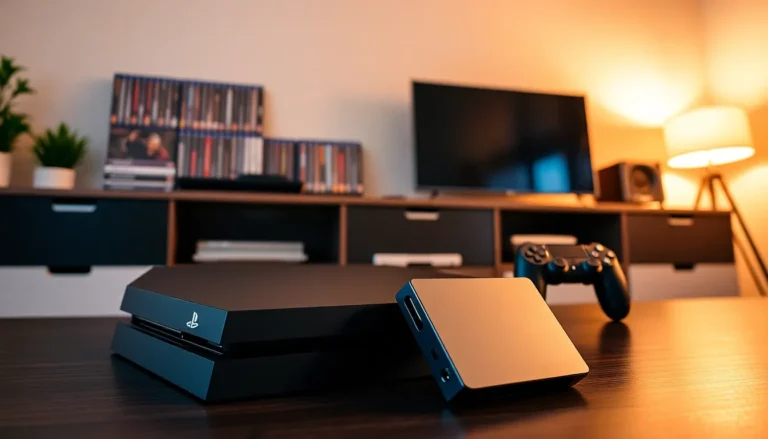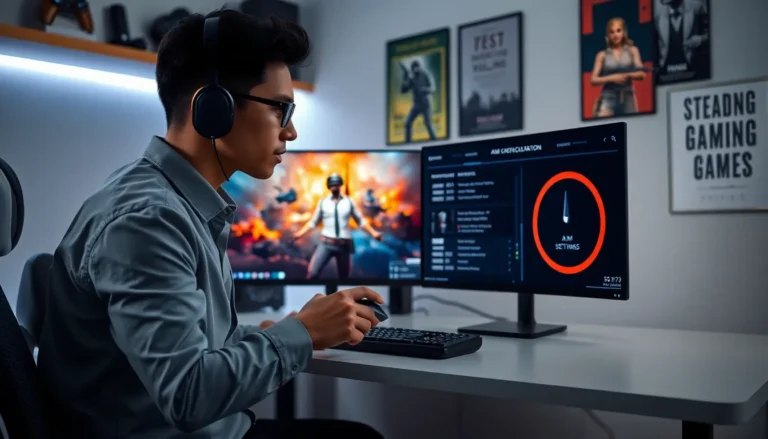Table of Contents
ToggleAre you tired of constantly battling your PlayStation 4’s storage limitations? It’s like trying to squeeze a giant into a child’s T-shirt. Well, worry not. Enter the external hard drive, the knight in shining armor that saves your gaming life. This guide will take you on a journey through the often murky waters of external storage for your PS4 and ensure you make a decision that’s best suited for your gaming needs. Grab your snacks and get comfy: it’s time to jump into the world of external hard drives.
Understanding External Hard Drives for PS4

The PlayStation 4, like any great console, has a robust library of games. But, these titles can quickly gobble up your internal storage like a hungry Pac-Man. External hard drives are essentially your PS4’s backup dancers, expanding its storage capacity without the need for complex surgery or expensive upgrades. They connect via USB, which makes them a breeze to use.
Depending on the model and format of your hard drive, you can store games, apps, and even media files. But not all hard drives are created equal. Some are designed specifically for gaming, while others might just be your average Joe from the tech aisle. Knowing which one to pick can make all the difference in your gaming journey.
Benefits of Using an External Hard Drive
The perks of an external hard drive are as plentiful as a candy store in Halloween. First off, you’re looking at significantly increased storage space. No more deleting old favorites just to make room for something new: your library can expand without limits.
Also, accessing and loading games stored externally is often just as fast as those living in your PS4’s internal memory. You might occasionally notice slight variations in load times, but those are usually negligible. Plus, many external hard drives offer portability. You can easily take your library to a friend’s house and resume your epic adventures without missing a beat. Finally, external drives can be a cost-effective solution compared to upgrading your PS4’s internal drive.
How to Choose the Right External Hard Drive
Selecting the right external hard drive is akin to finding the perfect pair of shoes: it must fit your needs and lifestyle. Start by assessing your storage requirements. If you have a large collection of games or plan on downloading many digital titles, you’ll want a drive with ample capacity, often starting around 1TB.
Speed is another important aspect. Look for drives that offer USB 3.0 or higher, as they generally provide faster data transfer speeds. Also, consider whether you’d like a HDD (hard disk drive) or an SSD (solid-state drive). HDDs tend to be more budget-friendly, offering more space for less cash, but SSDs typically boast faster load times and better performance. Finally, reliability is crucial. Brands with solid reputations can save you headaches down the line, so reviews really do matter.
Setting Up Your External Hard Drive with PS4
Getting your external hard drive up and running with your PS4 isn’t rocket science, but it does require a few tidy steps. First, you’ll want to ensure that your external hard drive is formatted for compatibility. The PS4 usually prefers drives formatted to exFAT or FAT32. You can do this via a PC or directly on the PS4 if needed.
Next, plug the drive into one of the USB ports on your PS4 while it’s turned on. Upon recognition, the console will prompt you to format the drive for storage use. This process is straightforward: just follow the on-screen instructions, and voilà, you’re good to go. Afterward, you can easily manage your storage settings by navigating to the Settings menu under ‘Storage’.
Transferring Games and Data to External Storage
Transferring games and data is where the magic happens. Once your external hard drive is set up, you can start moving your favorite titles. Simply go to your Library and highlight the game you wish to transfer. Press the Options button on your controller, and select ‘Move to Extended Storage.’ It’s that easy. The transfer process typically takes just a few moments, depending on the size of the game.
If you want to prioritize new downloads to go directly to your external storage, head to Settings, then Storage, and adjust your options to designate the external drive as your primary storage. This way, all new games will automatically save to your external drive, giving you peace of mind.
Troubleshooting Common Issues
While most users find their external hard drives smooth sailing, hiccups can occasionally occur. One common issue is the PS4 not recognizing the external drive. To troubleshoot this, first ensure the drive is properly powered, plugged in, and formatted correctly. Sometimes, simply disconnecting and reconnecting can do the trick.
Another issue might arise when attempting to transfer data, only for the process to come to a grinding halt. If this happens, a restart of your PS4 can often remedy the problem. Finally, if you encounter any performance issues with games running from the external drive, ensure your drive is adequately fast for gaming, ideally with USB 3.0 specifications.





